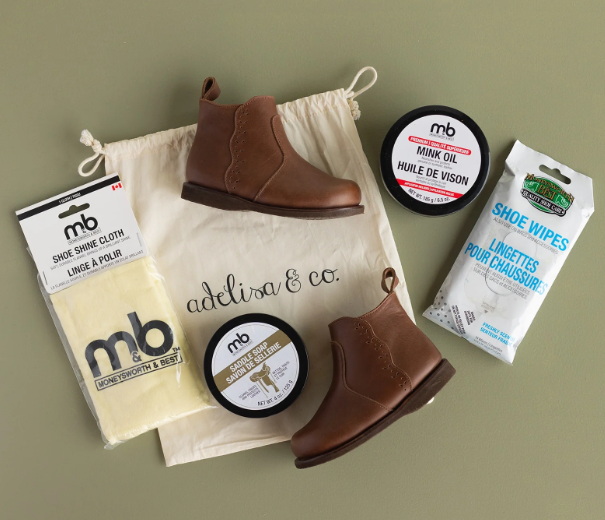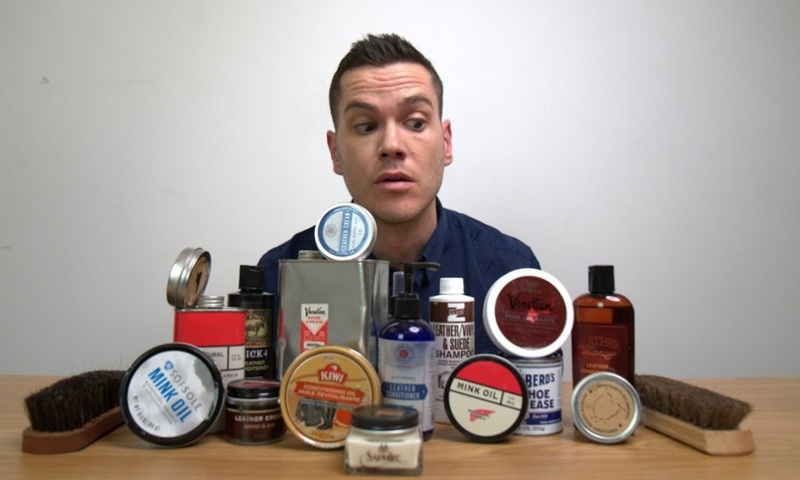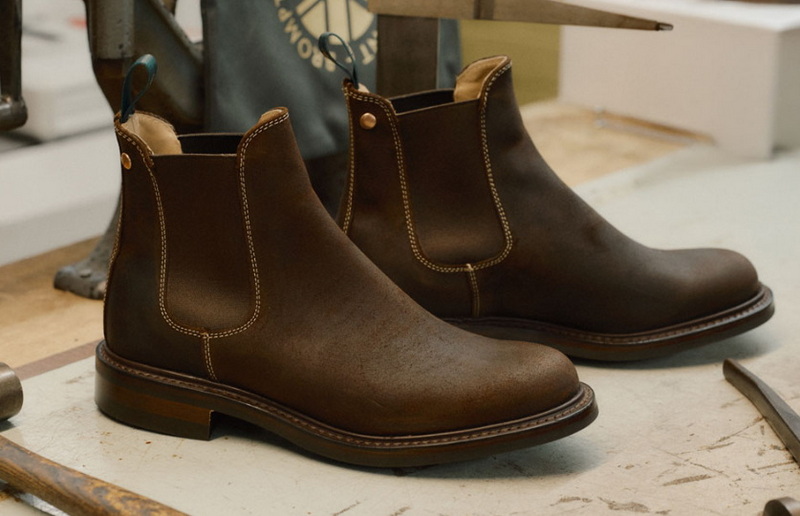Content Menu
● Understanding Chelsea Boots
● Materials Needed for Cleaning
● Step-by-Step Cleaning Process
>> 1. Remove Laces and Debris
>> 2. Prepare Cleaning Solution
>> 3. Clean the Boots
>> 4. Focus on Stains
>> 5. Rinse Off Soap
>> 6. Drying Process
>> 7. Condition the Leather
>> 8. Optional: Polish for Shine
● Common Mistakes to Avoid
● Additional Care Tips for Chelsea Boots
>> 1. Regular Maintenance Routine
>> 2. Proper Storage Techniques
● Choosing the Right Products for Your Chelsea Boots
● The History and Evolution of Chelsea Boots
● Types of Leather Used in Chelsea Boots
● Leather Soles vs. Rubber Soles
● Dealing with Specific Issues
● Cleaning Different Types of Leather
● The Enduring Appeal of Chelsea Boots
● Conclusion
● FAQs
>> 1. How often should I clean my Chelsea boots?
>> 2. Can I use regular soap on my leather Chelsea boots?
>> 3. What should I do if my Chelsea boots get wet?
>> 4. Is it necessary to condition my leather boots?
>> 5. Can I use polish on suede Chelsea boots?
● Citations:
Chelsea boots are a timeless and versatile footwear choice, known for their sleek design and comfort[1][2]. However, to maintain their elegance and durability, proper cleaning and care are essential[12]. This comprehensive guide will walk you through the steps to clean leather Chelsea boots effectively, ensuring they remain in pristine condition for years to come.

Understanding Chelsea Boots
Chelsea boots originated in the Victorian era and have remained a staple in both men's and women's fashion[1][2][7]. Their elastic side panels and ankle height make them easy to slip on and off, while their classic design allows them to be styled for various occasions[1][9]. The design is credited to Queen Victoria's shoemaker Joseph Sparkes Hall[7][13][15]. However, the materials used in these boots, primarily leather, require specific care to preserve their quality[4][6].
Materials Needed for Cleaning
Before diving into the cleaning process, gather the following materials:
- Soft-bristled brush or horsehair brush
- Damp cloth or sponge
- Mild dish soap or saddle soap
- Leather conditioner
- Neutral shoe cream or polish (optional)
- Old toothbrush (for hard-to-reach areas)
- Newspaper or cloth (to catch excess dirt)
Step-by-Step Cleaning Process
1. Remove Laces and Debris
If your Chelsea boots have laces, remove them first. This allows you to clean every nook and cranny without obstruction. Next, use a soft-bristled brush to remove any loose dirt or debris from the surface of the boots. Be gentle to avoid scratching the leather.
2. Prepare Cleaning Solution
Mix a small amount of mild dish soap or saddle soap with warm water[12]. Avoid using harsh chemicals as they can damage the leather.
3. Clean the Boots
Dampen a cloth or sponge with the soapy water solution[12]. Gently wipe down the entire surface of the boots, making sure not to soak the leather. Excess water can lead to damage or warping.
4. Focus on Stains
For stubborn stains, create a paste using baking soda and water or use a mixture of two parts water and one part white vinegar. Apply this paste directly onto the stain with a soft cloth or an old toothbrush, gently scrubbing until it lifts away.
5. Rinse Off Soap
After cleaning, take another damp cloth with plain water and wipe down the boots again to remove any soap residue. This step is crucial as leftover soap can dry out the leather.
6. Drying Process
Allow your Chelsea boots to air dry naturally at room temperature[12]. Avoid placing them near direct heat sources like radiators or hair dryers, as this can cause cracks in the leather.
7. Condition the Leather
Once dry, apply a leather conditioner to nourish and protect the leather[6]. Use a clean cloth to apply a thin layer of conditioner evenly across the surface of the boots. Conditioning helps maintain flexibility and prevents cracking[6].
8. Optional: Polish for Shine
If you desire extra shine, apply a neutral shoe cream or polish using a soft cloth in circular motions[6]. Allow it to sit for a few minutes before buffing with a clean cloth for a polished finish[6].
Common Mistakes to Avoid
- Soaking Leather: Always avoid soaking your Chelsea boots in water as it can lead to irreversible damage[12].
- Using Harsh Chemicals: Stick to mild soaps specifically designed for leather cleaning[12].
- Neglecting Regular Care: Regular cleaning and conditioning help prevent dirt buildup and extend the life of your boots[12].

Additional Care Tips for Chelsea Boots
Maintaining your Chelsea boots goes beyond just cleaning them; it involves proper storage and occasional maintenance practices that can enhance their longevity[12].
1. Regular Maintenance Routine
To keep your Chelsea boots looking their best:
- Clean them after every few wears, especially if they've been exposed to dirt or moisture[12].
- Condition them every 3-6 months, depending on how often you wear them[6].
- Polish them regularly to maintain shine and protect against scuffs[6].
2. Proper Storage Techniques
When not in use, store your Chelsea boots properly[12]:
- Use boot trees or stuff them with newspaper to maintain their shape[12].
- Store them in a cool, dry place away from direct sunlight[12].
- Avoid cramming them into tight spaces; allow for air circulation around each pair[12].
Choosing the Right Products for Your Chelsea Boots
Selecting appropriate products is crucial for effective care:
- Leather Cleaners: Look for pH-balanced cleaners that are specifically formulated for leather.
- Conditioners: Use high-quality conditioners like Bick 4 or Venetian Shoe Cream that penetrate well without darkening your leather excessively.
- Polishes: Choose neutral polishes that match your boot color; avoid colored polishes if you want to maintain original hues[6].
The History and Evolution of Chelsea Boots
The Chelsea boot has a rich history, originating in the Victorian era[1][2][7]. J. Sparkes-Hall, a bootmaker for Queen Victoria, is credited with their design in 1851[1][2][3][7][15]. The elastic side panels, made possible by Charles Goodyear's invention of vulcanized rubber, allowed for easy slip-on and removal[1][3][7][8]. Initially known as "paddock boots," they were popular for horseback riding[1][3].
Over time, Chelsea boots transitioned from equestrian wear to a fashion staple[1][2][9]. They gained popularity in the 1960s, becoming a symbol of the mod subculture and Swinging London, embraced by icons like The Beatles and The Rolling Stones[1][2][7][15]. This association cemented their status as a timeless and versatile footwear choice[2][9].
Types of Leather Used in Chelsea Boots
The type of leather used significantly impacts the boot's durability, appearance, and care requirements[4][6][14]. Here are some common types:
- Full-Grain Leather: Considered the highest quality, full-grain leather is durable and develops a unique patina over time[5][6][11][14]. It showcases the natural texture and grain of the hide[5][6].
- Top-Grain Leather: Slightly less durable than full-grain, top-grain leather is sanded to create a more uniform appearance[5][11][14].
- Suede: Made from the underside of animal hides, suede is soft and stylish but requires more care due to its susceptibility to stains and moisture[4][10].
- Boxcalf leather: Boxcalf leather is the most traditional material used when crafting Chelsea boots and has a very timeless quality to it[10].
Leather Soles vs. Rubber Soles
Chelsea boots can come with leather or rubber soles, each offering different benefits[4][10]:
- Leather Soles: Traditional and elegant, leather soles are ideal for dress boots[4][10].
- Rubber Soles: More durable and providing better grip, rubber soles are suitable for everyday wear and outdoor activities[4][10].
Dealing with Specific Issues
- Scuff Marks: For light scuffs, gently rub with a damp cloth followed by conditioning[6]. For deeper scratches, use a color-matched polish after cleaning and before conditioning[6].
- Water Damage: Blot excess moisture immediately and allow to air dry at room temperature before conditioning. Consider applying a waterproofing spray for added protection[4].
Cleaning Different Types of Leather
The cleaning method may vary slightly depending on the type of leather:
- Full-Grain and Top-Grain Leather: Use a damp cloth with mild soap[6][12]. Condition after drying[6][12]. Polish for shine[6].
- Suede: Use a suede brush to remove dirt[12]. For stubborn stains, use a suede cleaner[12]. Avoid soaking with water[12].
- Imitation Leather: Clean with a damp sponge or cloth[12]. Feed the leather with a clear nourishing shoe cream[12].
The Enduring Appeal of Chelsea Boots
From their practical origins to their status as a fashion icon, Chelsea boots have proven their enduring appeal[1][2][9]. Their versatility allows them to be dressed up or down, making them a staple in wardrobes worldwide[2][9]. Proper care and cleaning will ensure that your Chelsea boots remain a stylish and reliable part of your wardrobe for years to come[12].
Conclusion
Cleaning your Chelsea boots is not just about aesthetics; it's about preserving their quality and extending their lifespan[12]. By following these steps diligently, you ensure that your investment remains stylish and functional for years to come.

FAQs
1. How often should I clean my Chelsea boots?
It's recommended to clean your Chelsea boots every few weeks if worn regularly or after exposure to dirt or moisture[12].
2. Can I use regular soap on my leather Chelsea boots?
No, it's best to use mild dish soap or saddle soap specifically designed for leather cleaning[12].
3. What should I do if my Chelsea boots get wet?
If your Chelsea boots get wet, allow them to dry naturally at room temperature and avoid direct heat sources[12].
4. Is it necessary to condition my leather boots?
Yes, conditioning is essential as it helps maintain moisture levels in the leather, preventing it from drying out and cracking[6].
5. Can I use polish on suede Chelsea boots?
No, avoid using polish on suede as it can damage its texture; instead, use a suede-specific cleaner[4].
Citations:
[1] https://www.thelordsclub.com/blogs/news/the-history-of-chelsea-boots-from-victorian-innovation-to-modern-fashion-staple
[2] https://palmerjamesdesigns.com/blogs/news/the-history-of-the-chelsea-boot
[3] https://row.crockettandjones.com/blogs/the-article/origins-of-the-chelsea-boot
[4] https://www.ahume.co.uk/blog/chelsea-boots-the-ultimate-buyers-guide/
[5] https://www.cheaney.co.uk/grain-leather-t81
[6] https://bakershoe.com/blogs/news/the-complete-leather-boot-care-guide
[7] https://en.wikipedia.org/wiki/Chelsea_boot
[8] https://www.chelseaboot.com/pages/the-history-of-the-chelsea-boot-1
[9] https://www.acemarks.com/blogs/magazine/chelsea-boots-ultimate-guide
[10] https://www.gentlemansgazette.com/chelsea-boots-guide/
[11] https://stridewise.com/top-grain-vs-full-grain-vs-split-grain-leather/
[12] https://www.panamajack.nl/nl/blogs/news/how-to-clean-chelsea-boots
[13] https://baudoinlange.com/en-hk/blogs/news/history-of-chelsea-boot
[14] https://journal.herringshoes.co.uk/2023/what-leather-should-i-choose/
[15] https://www.morjas.com/row/blog/history-chelsea-boots/
[16] https://int.florisvanbommel.com/en/blog/chelsea-boots-women.html
[17] https://www.instagram.com/kuvet_shoes/reel/DCr_R7htQcf/
[18] https://www.cheaney.co.uk/blog/a-guide-to-chelsea-boots-your-new-favourite-boot-for-every-day/
[19] https://www.oswinhyde.com/blogs/news/mens-chelsea-boots-a-history-lesson-by-oswin-hyde
[20] https://teym.eu/blog/history-of-the-chelsea-boot/

















